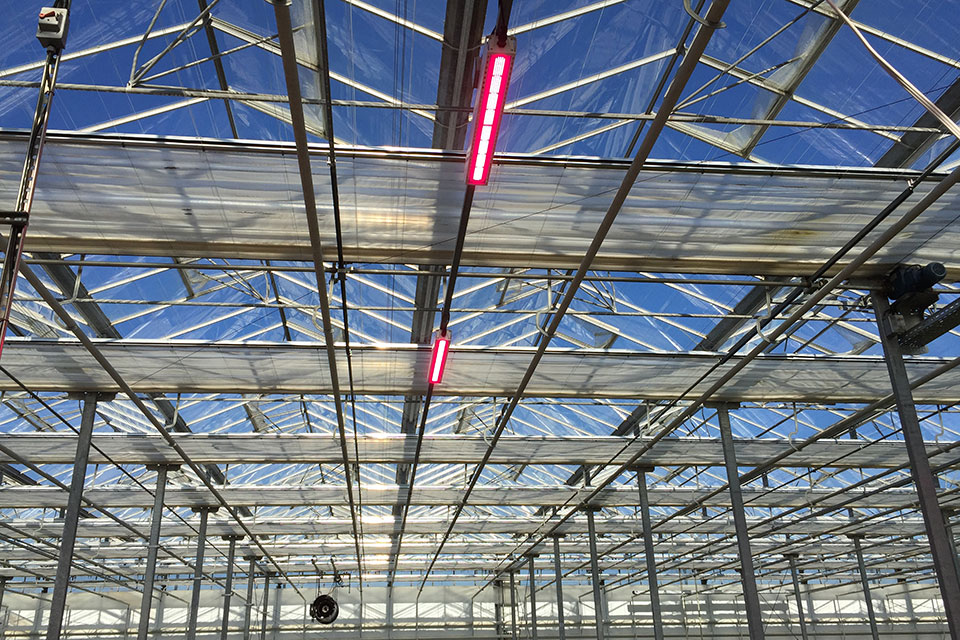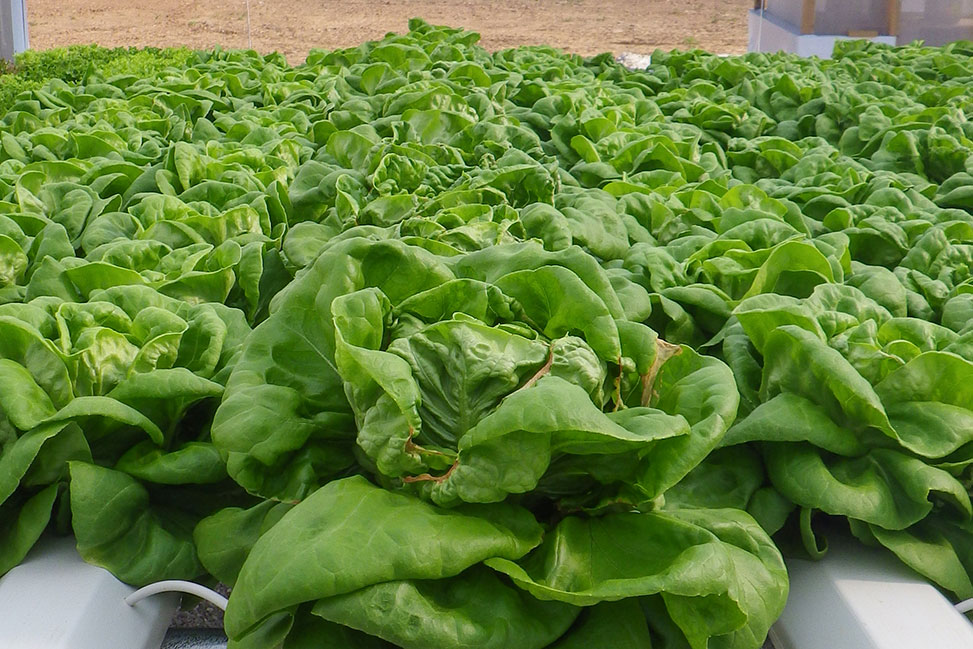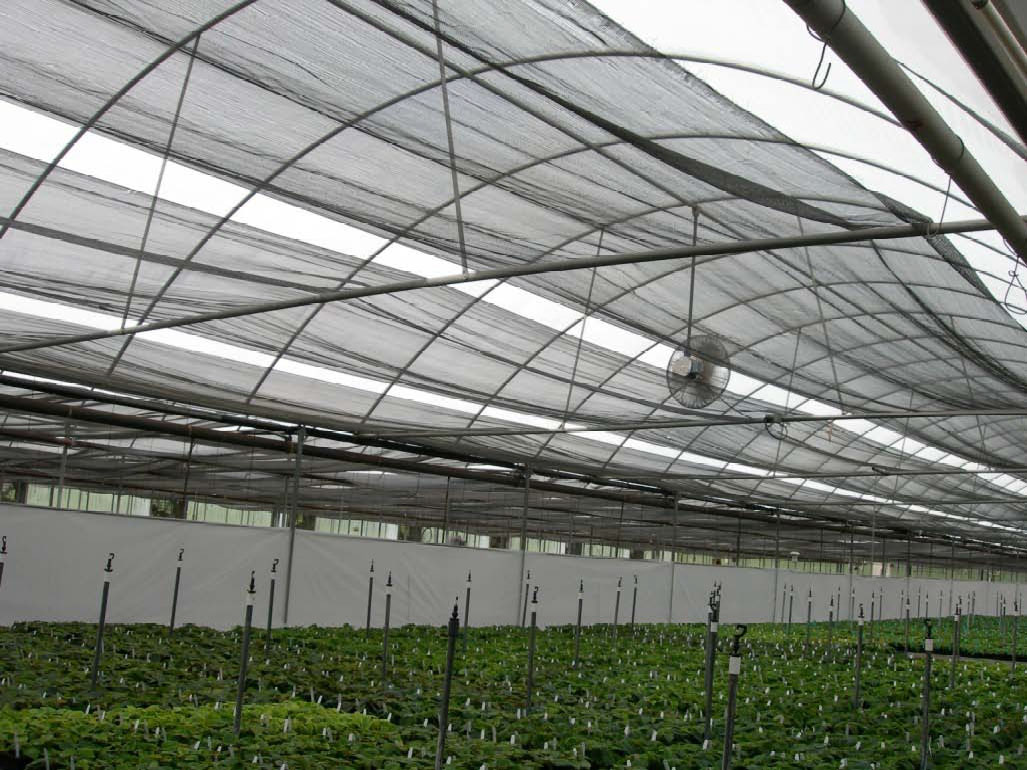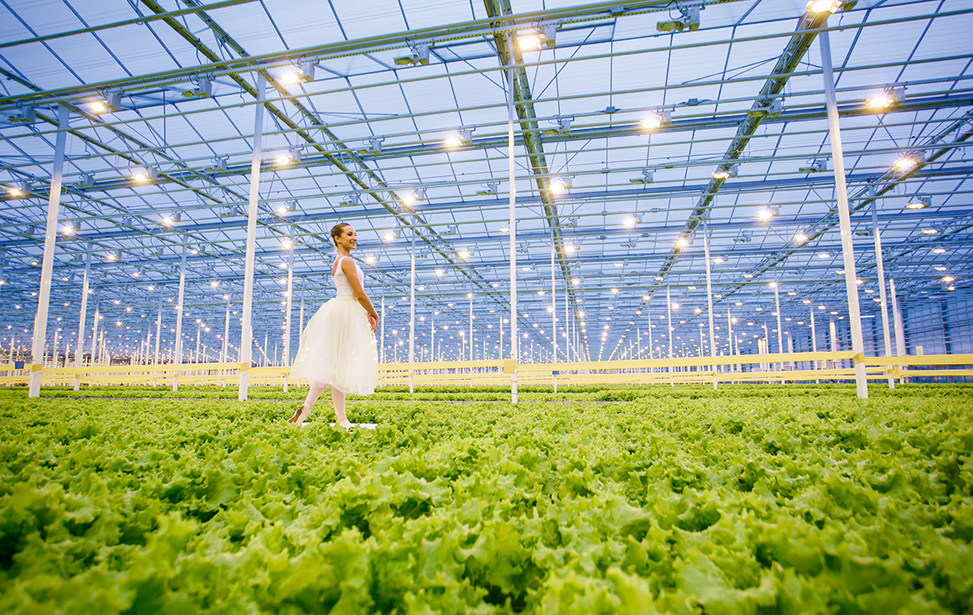As spring turns into summer, greenhouse growers across the country are starting to prepare for longer, warmer, and more humid days. They are starting to adjust their climates and reboot systems that have been sitting idle for months. This transition into the more extreme weather of summer can be both a real challenge and a great opportunity for many growers.

In this article, we will discuss three of the major changes that summer brings to greenhouses (more light, higher temperatures, and higher humidity) and what growers can do to abate any negative impacts and maintain a stable greenhouse climate. We will also share some tips on how to maximize productivity of your greenhouse in the summer months.
Light Intensity/Photoperiod (DLI)
The onset of summer generates a lighting change for greenhouse growers, specifically longer photoperiods (a.k.a. daylengths) and increased light intensity, both of which add to daily light integral (DLI). Faster crop growth rates occur under high DLI; however, increased plant stress is of concern. For example, head lettuce grows optimally under a DLI of 17 mol·m-2·s-1, but when the optimal DLI is exceeded, the plants can grow too fast, resulting in tipburn (a physiological disorder that causes calcium deficiency and marginal necrosis/distortion of young leaves).
Additionally, every plant has a threshold of light intensity that correlates to optimal photosynthetic gain, and beyond this threshold, increasing light has either no effect or negative effects on photosynthesis. Thus, in the summer months it is crucial to both have accurate measurements of light in the greenhouse at all times and to understand the tools at your disposal to control the amount of light reaching your crop, so as to avoid the potential negative effects of too much light.
As a greenhouse grower, you have a handful of tools in your kit to reduce incoming light. Shade cloths are among the most common throughout the industry. They come in various levels of transmissivity (intensity control), as well as opaqueness (photoperiod control). If your shade cloth is motorized, make sure your motors are working before the summer starts.
In addition to shade cloths, latex shade paint is another common mitigation tool to reduce incoming light. It can be sprayed on at the beginning of summer and washed off at the end. If manually applied, be sure to check your forecast outlook, as timing will save you money. Applying too early or too thickly will reduce the amount of available light, thus slowing down crop growth. Accurate light measurements and an understanding of your crop’s biology will tell you when to employ shade. An effective shade strategy in the summer months is crucial to keeping your crop healthy, strong, and stress-free.

Also, as light increases, so does the plant’s water consumption. Be prepared to adjust your irrigation cycles. You may also need to adjust your fertilizer recipe. The ratio of water to nutrients that the plant takes up increases as light increases, so you may need to decrease your nutrient solution EC (electrical conductivity) to maintain a stable root-zone EC.
Temperature
Increases in light intensity and photoperiod have a direct connection to the temperature in your greenhouse. Similar to increased light, increased temperature can have positive effects on plant growth (speeding up development rate), but also a few negatives as well. High temperatures correlate with reduced seed germination for many crops, premature bolting in lettuce, reduced flower development in strawberries, and reduced fruit set in strawberries, peppers, and tomatoes. Furthermore, many insect pests have a quicker reproduction time in warmer temperatures, requiring more frequent integrated pest management (IPM) applications.
If not properly managed, summer heat will cost your greenhouse money. Before the summer comes, be certain that your cooling systems are in place and operational. Passive and active venting that has been insulated for winter should be free of obstructions. Exhaust fans will be run for longer hours and should be inspected for proper alignment, functionality, and lubricated if necessary.
Evaporative coolers and positive pressure (swamp) coolers should be inspected for leaks. If not drained properly in the fall, pipes may have frozen and cracked. If you use a fog cooling system, nozzles need to be inspected and cleaned of obstructions to assure that when the heat comes, you’re ready. Keeping your greenhouse to an appropriate range of temperatures in the summer months is absolutely necessary for healthy crop growth and for the health and safety of your greenhouse employees.
Relative Humidity
The increased light in the summer months brings not only warmer temperatures but also increased humidity. While most growers already monitor relative humidity, this only accounts for the water vapor that is currently in the air and not how much it can hold. Since the saturation target of water in air varies as a function of temperature, relative humidity is not the best predictor of plant transpiration and water loss. Vapor pressure deficit (VPD), on the other hand, is the difference between the amount of moisture in the air and how much it can hold at saturation.
This makes VPD a more useful predictor in the greenhouse. Hot summer temperatures may feel humid, but warmer air has a greater capacity to hold water before condensing onto leaf surfaces stalling transpiration. Substrate moisture levels, therefore, need to be closely monitored to avoid water stress. If your irrigation schedule is on a timer, it may need to be readjusted for the changing season.
To help mitigate high relative humidity (low VPD), look to reduce any extraneous water introduced to the greenhouse. Evaporation of water from greenhouse floors, holding tanks, root substrates, and other surfaces, as well as transpiration, all add to the humidity in the greenhouse. At high relative humidity (low VPD), pathogens such as botrytis (gray mold) and powdery mildew are favored. Moreover, various physiological abnormalities like tipburn in lettuce and blossom end rot in tomatoes are at risk in humid environments.
Use of horizontal or vertical airflow fans improves microclimate humidity/VPD and decreases sensitivity to physiological disorders or disease. Additionally, continuous or frequent air exchanges in the greenhouse may be required to relieve high relative humidity through passive or active venting. Also, if misting systems are employed for cooling, be sure they are running only when plants have ample time to dry out before nightfall when outdoor ambient humidity increases.
While these summer weather changes bring forth many challenges to overcome, they also can create many opportunities for increased production and revenue. Warmer temperatures in the greenhouse can allow you to grow heat-loving crops like basil that you may not be able to grow at other times. Longer days and more light can greatly reduce growth cycles for many crops, which will allow you to harvest and sell more product faster. The warmer weather also drives people outside, which leads to an increased demand for bedding and landscaping plants. Additionally, restaurants, produce shelves at grocery stores, and farmers markets all see increased activity in the summer, which creates a higher demand for fresh produce.
It is imperative that growers prepare their greenhouse for the upcoming summer months, not only to abate the negative effects of extreme weather conditions, but also to prepare for the changes in production and sales, so as not to miss out on any revenue.












